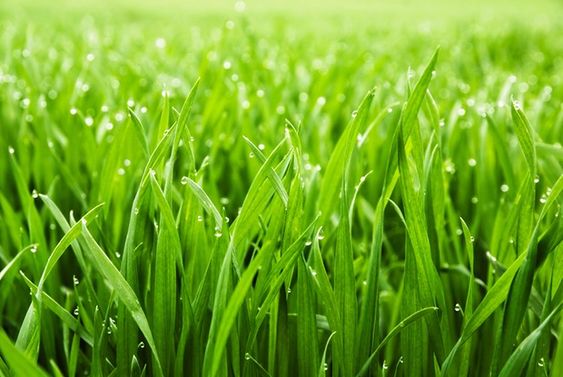Plant Azaleas Smarter: A Guide to Optimizing Cultivation with Smart Agriculture
Plant Azaleas, with their vibrant blooms and delicate foliage, are a popular choice for landscapes and container gardens. However, these beauties require specific care to thrive. Fortunately, advancements in Smart Agriculture offer a suite of technologies to optimize azalea cultivation, leading to healthier plants, increased yields, and improved resource management. This guide delves into the world of Smart Agriculture, exploring its application to azaleas and the benefits it brings to the agricultural sector.
Contents
- 1 Objectives of Smart Agriculture for Plant Azaleas
- 2 Smart Agriculture Technologies for Plant Azaleas
- 3 Explanation of Technologies and Their Benefits
- 4 Usefulness of Smart Agriculture in Plant Azaleas Production
- 5 Challenges and Considerations Plant Azaleas
- 6 Overcoming Challenges and Implementation Strategies
- 7 The Future of Smart Agriculture for Plant Azaleas
Objectives of Smart Agriculture for Plant Azaleas
Smart Agriculture aims to integrate technology and data-driven insights into agricultural practices. When applied to azaleas, it has several key objectives:
- Enhanced Plant Health: Sensors monitor environmental factors like temperature, humidity, and soil moisture, enabling proactive adjustments to optimize growing conditions and prevent disease or pest outbreaks.
- Precision Irrigation: Smart irrigation systems use soil moisture sensors to deliver water only when needed, minimizing water waste and promoting healthy root growth.
- Improved Resource Management: Data analytics tools help track resource use, allowing growers to optimize fertilizer application and energy consumption for sustainable practices.
- Increased Yield and Quality: By maintaining optimal growing conditions, Smart Agriculture fosters healthy plant development, leading to higher yields and improved flower quality.
- Reduced Labor Costs: Automation technologies, such as controlled-environment agriculture systems, can streamline tasks associated with monitoring and environmental control, reducing labor needs.
Smart Agriculture Technologies for Plant Azaleas
Several key technologies underpin Smart Agriculture practices for Plant Azaleas:
- Internet of Things (IoT) Sensors: These sensors collect real-time data on environmental factors like temperature, humidity, light intensity, and soil moisture. This data is then transmitted wirelessly to a central platform for analysis.
- Wireless Communication Networks: Secure communication networks ensure the seamless transmission of data from sensors to the central platform.
- Cloud-Based Data Management Platforms: These platforms store and analyze data collected from sensors. This allows growers to visualize trends and make informed decisions.
- Automation Systems: These systems can automate tasks like irrigation, ventilation, and lighting based on real-time data and pre-determined parameters.
- Decision Support Systems: Advanced software tools analyze data and provide growers with actionable insights, optimizing resource use and promoting plant health.
Explanation of Technologies and Their Benefits
Let’s delve deeper into specific technologies and their benefits for Plant Azaleas cultivation:
- Soil Moisture Sensors: These sensors directly measure soil moisture levels, allowing growers to adjust irrigation practices based on the plant’s actual needs. This eliminates overwatering, which can lead to root rot and other diseases, while ensuring plants receive sufficient water to thrive.
- Temperature and Humidity Sensors: These sensors monitor the environment within the greenhouse or growing area. Real-time data allows for adjustments to heating, cooling, and ventilation systems to maintain optimal conditions for growth and flowering. Consistent temperature and humidity control reduces stress on plants and minimizes the risk of disease.
- Light Sensors: Light sensors measure light intensity and duration. This data helps growers adjust lighting systems to provide optimal light levels for azaleas, which vary depending on the specific variety. Proper light management promotes healthy flower development and vibrant colors.
- Automated Irrigation Systems: These systems use data from soil moisture sensors to deliver water directly to the root zone through drip irrigation or other methods. This minimizes water waste and ensures efficient irrigation, leading to healthier root development and improved plant growth.
- Decision Support Systems (DSS): DSS analyze data from various sensors and combine it with historical data and weather forecasts. Based on this comprehensive analysis, DSS can offer tailored recommendations for irrigation, fertilization, pest control, and environmental control. This empowers growers to make data-driven decisions that optimize plant health and overall production efficiency.
Usefulness of Smart Agriculture in Plant Azaleas Production
Smart Agriculture offers significant benefits for both growers and consumers:
- Increased Profitability: Reduced waste, optimized resource use, and improved yields can significantly improve a grower’s profitability.
- Improved Sustainability: Smart techniques promote water conservation, reduce reliance on chemical pesticides, and minimize energy consumption, contributing to environmental sustainability.
- Enhanced Plant Quality: By optimizing growing conditions, this approach leads to healthier plants, with vibrant flowers and improved resistance to pests and diseases.
- Reduced Labor Costs: Automation technologies can streamline tasks associated with monitoring and environmental control, reducing labor needs and allowing growers to focus on value-added activities.
- Traceability and Consumer Confidence: Data collected through Smart practices can be used to create detailed production records, ensuring transparency and building consumer confidence in the origin and quality of azaleas.
Challenges and Considerations Plant Azaleas
Plant Azaleas,While Smart Agriculture offers numerous benefits, some challenges need to be addressed:
- Initial Investment: Implementing these technologies requires an initial investment in sensors, software, and potentially automation systems.
- Technical Expertise: Integrating these technologies requires a certain level of technical knowledge or the ability to hire personnel with the necessary expertise to operate and maintain the systems effectively.
- Data Security: With the increased reliance on data, robust cybersecurity measures are crucial to protect sensitive information collected by the sensors and platform.
Overcoming Challenges and Implementation Strategies
Several strategies can help growers overcome these challenges and successfully implement Smart Agriculture practices:
- Start Small: Begin by implementing a few key technologies like soil moisture sensors and gradually expand the system based on experience and budget.
- Seek Funding and Assistance: Government grants, agricultural associations, and technology companies may offer financial assistance or training programs to support growers adopting Smart Agriculture solutions.
- Collaboration and Knowledge Sharing: Forming partnerships with other growers or technology providers can help share knowledge, resources, and best practices for successful implementation.
- Focus on Return on Investment (ROI): Carefully evaluate the cost-benefit analysis of different technologies and prioritize those that offer the most significant potential for increased profitability and resource efficiency.
The Future of Smart Agriculture for Plant Azaleas
The future of Smart Agriculture for Plant Azaleas holds exciting possibilities:
- Advanced Sensors: The development of even more sophisticated sensors could provide even more granular data on plant health, including nutrient deficiencies and early signs of pest or disease infestation.
- Artificial Intelligence : AI-powered systems could analyze data and generate real-time predictions, allowing for proactive interventions and further optimization of growing conditions.
- Robotics and Automation: Greater automation in tasks like transplanting, pruning, and harvesting could further reduce labor costs and improve production efficiency.
- Integration with Consumer Trends: Smart Agriculture data could be used to tailor azalea production to meet specific consumer preferences, such as organic certification or locally sourced flowers.
Plant Azaleas Smart Agriculture presents a transformative opportunity for azalea growers. By embracing these technologies, growers can optimize production practices, enhance plant health and quality, and contribute to a more sustainable future for the industry. As technology continues to evolve, the possibilities for further refinement and innovation in Smart Agriculture for azaleas are limitless.




